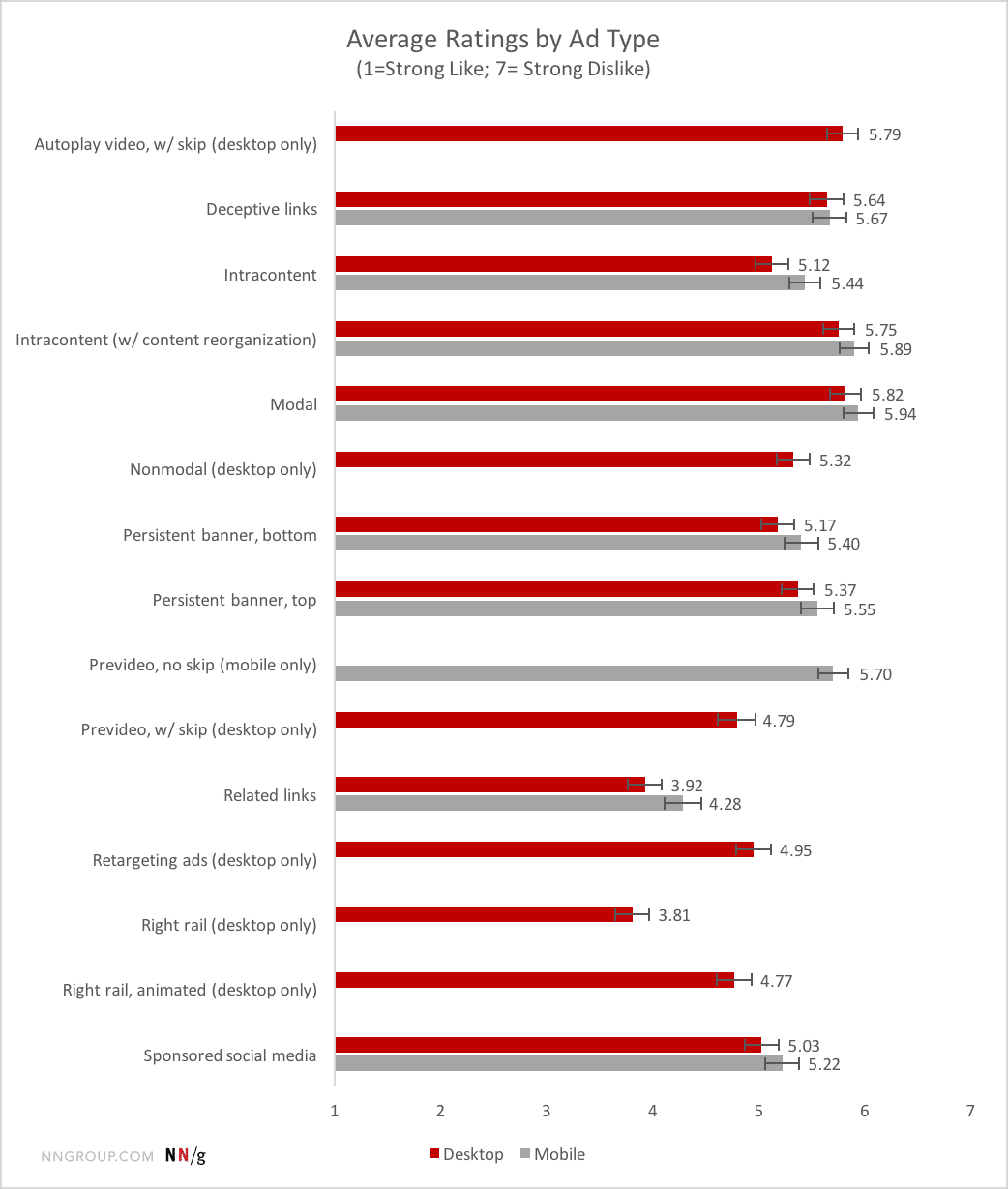Got Ads? Here’s How to Not Annoy Your Users
For as fast as web design trends and technology move, online advertising evolves just as quickly.
From the earliest days of banner ads to today’s focus on sponsored content and pre-roll video, online advertising has changed in response to user engagement, the growth of mobile devices, and the realities of generating revenue.
If you ask anyone who runs a successful online business — especially publishers — you’ll be inundated with stories about the pros and cons of advertising-supported websites.
I’m not here to debate the merits of running ads on your site; no one would deny that making money is crucial for the survival of a business.
Advertising is a relatively easy way to start generating revenue online, especially if your site isn’t focused on selling products or an offline service.
But it’s clear that not all advertising is created equal, and in many cases, the wrong online advertising can have an adverse effect on your business.
There Are Such Things as Terrible Ads
Publishers and users can disagree about how much advertising is too much and if some ad formats actually work, but there’s a definitive truth that some ad units are simply terrible.
- Any video that autoplays without the user’s consent is bad.
- Any ad that redirects a user (especially on mobile) to a different site without their consent is really bad.
- Any ad that covers content without the ability to be easily closed is annoyingly bad. This is especially true on mobile devices.
From a publisher’s point of view, the ability to stick an ad in front of a user may mean a higher CPM or better conversion rate, but it comes at a cost — the user.
An entire industry has been built to prevent users from seeing ads, with advertising blockers like Adblock Plus that are free, easy-to-use, and generally pretty good and preventing ads from loading and being seen.
But it’s not just independent developers helping to block ads.
Apple offers ways to combat ads, with its Safari Content Blocker and its new version of Safari for the desktop, which has built-in autoplay video blocking.
Terrible ads may make you money in the short-term, but users will react — either by blocking them or going to your competitor instead.
The Technical Problems The Wrong Advertising Cause
In addition to annoying your users, bad advertising can cause serious technical issues for your website.
The biggest problem I’ve seen is increased load time, making normally quick websites take twice or three times as long to load.
Many ads from ad networks load scripts, files and images from across the Internet, and when they’re embedded on your site, you’re at the mercy of how quickly those other servers load. Most of the time, your website speed suffers.
The second you add a third-party script to your site, you’ve lost control over your site’s load time. If something goes wrong with your ad network, your site may take forever to load — if it loads at all.
Worst of all, when there’s a problem, there’s usually nothing you can do about it except wait it out or remove the ad.
If your site is secure (which it should be), there’s also a chance that some ad in your network isn’t — and you’re opening yourself up to mixed content errors that render your site insecure.
So Which Ads Actually Work?
Our go-to usability experts at the Nielsen Norman Group recently listed out the most hated online advertising techniques, and as you’d expect, most website ads are disliked.
In their research, they showed 15 different types of ads to users across both desktop and mobile devices, with each ad type getting a ranking from 1 (strong like) to 7 (strong dislike).
The average overall score was 5.23.
The only ads that even skewed toward the “like” end of the spectrum were Related Links and a Right Rail ad (both on desktop only) — and they were ranked in the high 3s, near the neutral ranking of 4.
Want to know the worst ads?
For desktop:
[The] winner for most hated ad type on desktop is a four-way tie between modal ads, autoplay video ads, intracontent ads which shuffle page content as they load, and deceptive links that look like content but are ads.
For mobile:
The most disliked ads were modal & intracontent ads with content reorganization — these were rated significantly higher than all other ads (with the exception of prevideo without skip and deceptive links).
Not surprisingly, most of the users in the research had negative open-ended comments about ads, but some formats did receive positive responses:
- “I like ads that do not obstruct content. I can glance to the side and decide if I want to open but am annoyed when I don’t have that choice.”
- “I am fond of links to the side and at the end of my pages. I can’t tell you why, but I like them and am much more likely to click on them and check them out than anywhere else.”
How Not to Annoy Your Users with Ads
How can you, as a website owner or publisher, effectively have ads on your site to generate revenue and stay in business, without hurting your relationship with the people who come to your site?
Start with thinking like a user.
It’s easy to do, because you are a user. Your website isn’t the only one you ever visit; think about how you feel about ads on other websites.
Are they enhancing your experience? At a minimum, are they not hurting your experience on the site?
There are always going to be people who block your ads — there’s nothing you can do to stop them, so it’s not worth trying. CNBC hilariously has a page on their website with instructions on how to turn off ad blockers while on their site.
No one using an ad blocker is ever going to do that.
Your goal is to make sure you don’t annoy the people who understand you need ads to survive.
- Don’t use intrusive ads.
- Don’t prevent them from completing their goals.
- Don’t accept ads from less-than-reputable sources or ad networks.
If possible, offer a paid, no-ads (or limited ad) experience. The people who appreciate what you offer will be willing to pay for it (either through a subscription or through viewing ads); and if not, they’re not an ideal customer.
It’s not always possible, but if you can find other ways to generate revenue besides relying on ads, you’ll be in a much better long-term financial position.
If you can, everyone — both you and your users — will be happy.
Photo by Tobias Moore on Unsplash


